Perfect for canals, drains, rivers, reservoirs and even commercials, whip fishing is fast, efficient and ideal for beginners or match anglers targeting silverfish.
A whip is one of the most straightforward and effective tools in coarse fishing. Light, responsive and easy to set up, whips are designed for speed fishing, where the aim is to catch as many fish as possible, as quickly as possible. They’re ideal for species like roach, bleak and dace, but are more than capable to deal with the odd bigger fish.
Fundamentally a whip is a telescopic pole that ranges anywhere from 2 to 5 metres in length. More advanced 'system' whips, are take apart, typically between 6 and 10 meters in length and will have top kits just like a fishing pole, giving the angler more control over how the whip performs and is used.
At the business end is a flick tip, which is where your rig attaches. This could be a metal eye, a plastic connector, or a simple piece of yarn, all serve the same purpose and that’s securely attaching a pre-tied rig. System whips, have top sections that can be elasticated, providing a bit more cushion when hooking a bigger fish. There’s no need for fishing reels, or over complicated rigs. Everything stays simple, which is why whips are a go-to for introducing new anglers to the sport.
The best fishing whips at a glance
In this article I will discuss the best whips on the market from simple, inexpensive options perfect for beginners to more advanced system whips...
How we test the best fishing whips
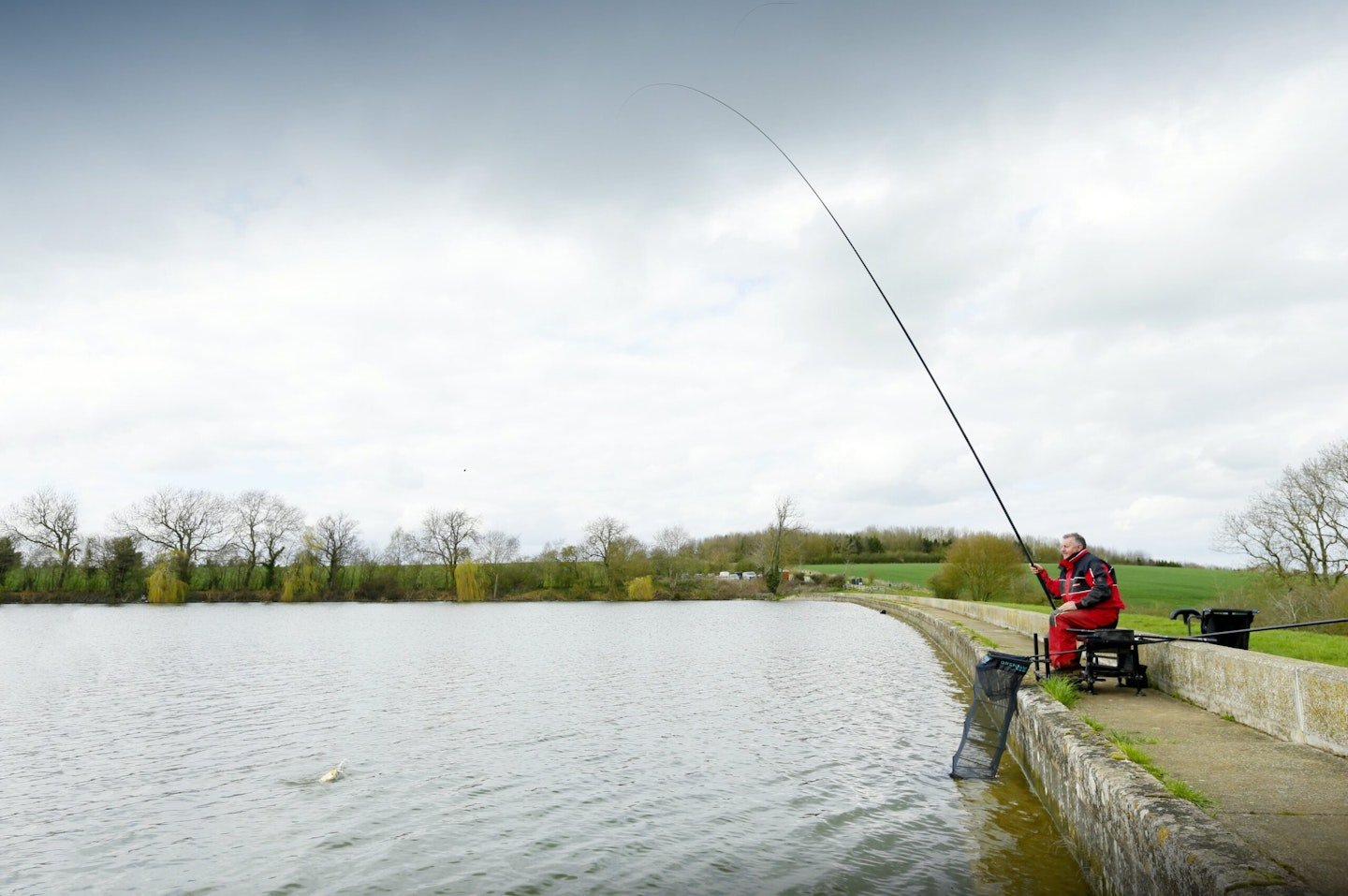
These whips were tested by experienced members of the Angling times team. We have been using and abusing fishing tackle for decades and have probably used (and broken) most, if not all of them during our time on the bank, so we know the best from the rest!
Team members, Mark Sawyer, Tony Grigorjevs and Dan Webb have been testing a variety of fishing whips for silverfish on a variety of venues, to see how they perform and give them a thorough testing.
Our decision process of what makes the best fishing whips takes into account various factors including price point, stiffness, weight and ease of use to ensure we can give you the best advice on factors that will make an actual different to your angling, rather than confuse you with a load of specifications.
The following list includes a mixture of the best available for all types of whip fishing to help find a reliable length of carbon for you. Find out how we test our gear, HERE.
The Drennan Vertex Elasticated Whip is an ideal beginner whip that’s built with some thought behind it. It’s a versatile tool that feels decent in the hand and gives new anglers a good chance of catching fish and landing them too.
The standout feature here is its fully elasticated top section. That bit of stretch acts as a cushion when you hook something a bit bigger than expected, maybe a greedy carp on commercials or a bonus perch on the canal. It takes the panic out of playing fish and keeps things nice and controlled.
You get everything you need to get started. The rig is already tied, with sensible line. 0.18mm mainline to a 0.15mm hooklength, finished off with a size 16 Silverfish Pellet hook that’ll hold maggots, casters, soft pellets or bread flake. It also comes with a disgorger, and the elastic connectors already fitted, so it’s good to go.
Available in 3m, 4m, and 5m options, there’s a length to suit different pegs and venues. Whether you’re sat on a canal, river, reservoir or even a commercial, it’s ideal for catching small fish, with the reassurance that the elastic will handle something bigger if it shows up.
Pros
- Quick and easy to start comes elasticated
- Supplied with rig
Cons
- Elastic pre fitted may not suit some anglers
Be it a river, a canal or your local commercial. The Daiwa Connoisseur Speed Whip lives up to the ‘Connoisseur’ moniker, it’s designed for speed fishing, and it’s seriously good at what it does.
Built on Daiwa’s HVF Nanoplus carbon with clever tech like X45 bias wrap and V-Joint, this range is crisp, light and outrageously responsive in the hand. Whether you’re snatching bleak at pace or long-lining for winter roach, every length in the range feels like it’s been purpose-built for the job.
Each model features a flick tip with fitted yarn for quick rig attachment. They’re fully telescopic, with that familiar Daiwa balance between featherweight handling and just enough backbone to deal with a surprise perch or bonus chub. You can’t bully big fish with it, but you won’t be caught out either.
Available from 2m up to 4.5m, plus a Connoisseur Pro 8m system whip for those who want the reach and the rigidity.
Pros
- Superb action
- Classy aesthetics
Cons
- Best suited to smaller species
Best budget whip

www.total-fishing-tackle.com
The A-Class Whip from Guru is exactly what you’d hope for in a first whip. It’s fuss-free, affordable, and built to do the job, whether you’re introducing a youngster to fishing or just want something reliable in your rad bag for a bit of fun.
It's fully telescopic so there’s no fiddling with sections. Just extend it, attach a ready tied rig using the easy connector at the tip, and you’re fishing, it simply doesn't get any easier and for the price, you can't fish any cheaper!
It’s available in 3m and 4m lengths, which cover most starter situations, fishing for small silverfish or canals and commercials where you can catch to hand. The action is soft enough to be forgiving when fish kick back, but there’s still enough strength in the blank to swing in smaller fish with confidence.
Despite the low price, this doesn’t feel like a toy. It’s light in the hand, well-balanced, and genuinely fun to use. For a young angler learning the ropes or someone after a stress-free way into whip fishing, this ticks all the right boxes.
Pros
- Beginner friendly
- Lightweight
Cons
- Very basic, may not be choice for more experienced angler
Best for rivers
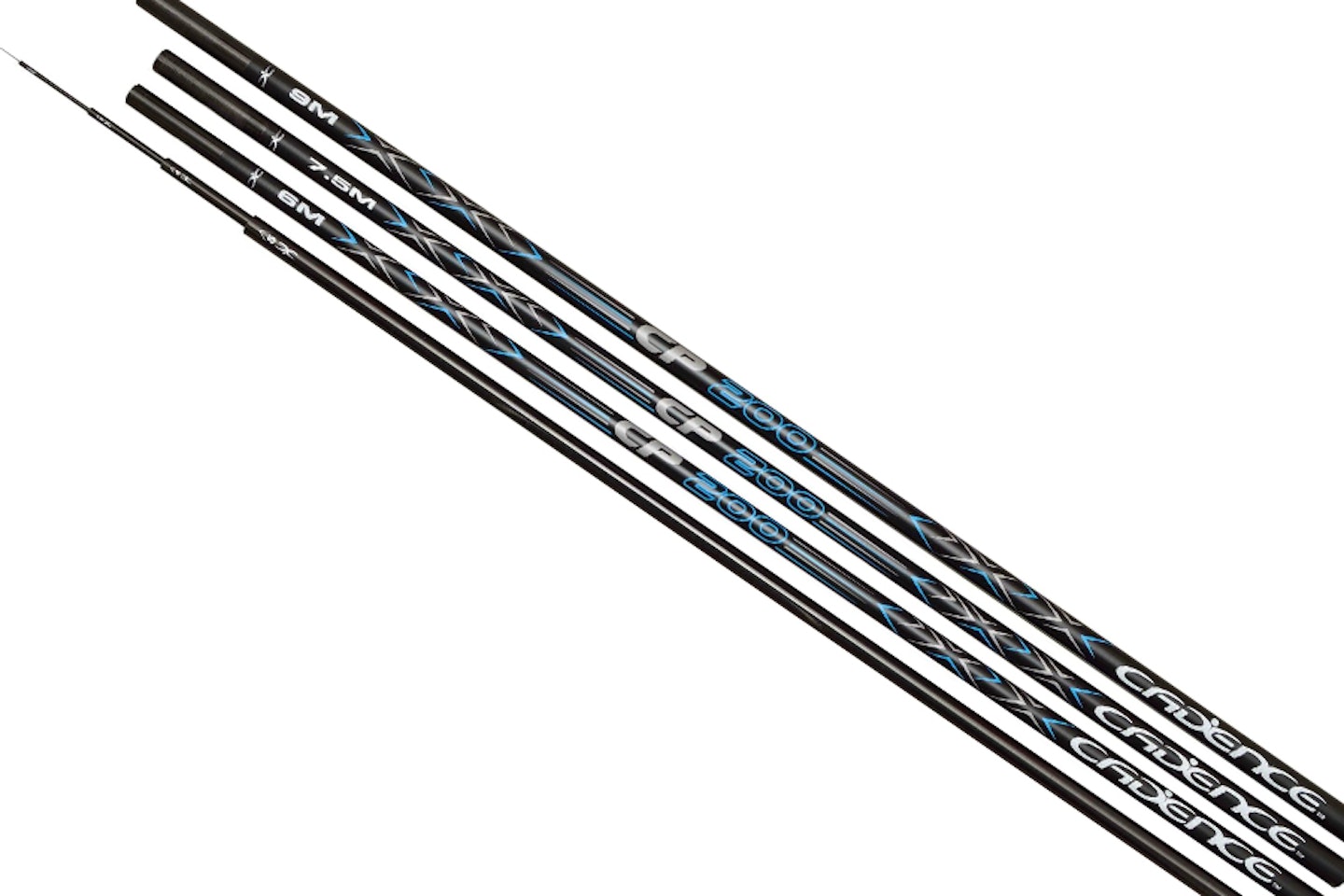
www.cadencefishing.co.uk
There’s nothing fancy about the Cadence CP200 Whip. This is a no-nonsense, properly thought-out bit of kit for anglers who fish rivers, drains and canals. Whether you're fishing to-hand for roach across a fenland drain or snaring dace on the river, this whip gives you the tools to fish fast and efficiently.
The CP200 comes in two main lengths, 6m and 9m. It’s design leans heavily towards river work. That said, it’s got enough backbone to be elasticated for use on big Dutch canals or in Ireland where big hybrids are the norm. I like that the whole top five is telescopic, giving it a stronger, more connected action that feels sharper when striking and more responsive when swinging fish to hand.
Extra top 3s and 5s are available at a decent price, and there’s interchangeability between the 6m and 9m models, which is exactly the versatility you want when you’re fishing a range of venues. It’s ideal if you want several tops set up for different rigs.
Pros
- Good strength for a long whip
- Additional top 3 and 5 kits can be added
Cons
- Not the strongest for carp
Best all-rounder

www.ebay.co.uk
If you want a whip that’s light, responsive and makes your life easier on the bank, the Acolyte Telescopic Pro range is hard to ignore. These whips aren’t just designed for short bursts of speed fishing, they’re built for it.
The 2m to 5m models are fully telescopic, making them quick to set up and ideal for fishing to-hand fishing on canals, drains, and rivers. Each one comes with a built-in flick tip and weighs next to nothing, just 31g on the 2m model, but they are still able to handle the odd surprise.
If you’re looking for something longer, the Acolyte Pro 8m and 10m versions offers even more versatility. It uses a spliced-in top three and comes as part of a wider system, supplied with two options: a standard bush and bung to elasticate the No2 section, and a second bung with a tension bead so you can tweak your elastic without cutting it. This whip will suit anglers who want to fish longer lines or at longer length on bigger venues. Extra top kits are available too, so you can prepared for a variety of venues.
Pros
- Light and responsive for speed fishing
- Can be elasticated for bigger fish
Cons
- Not in the the best price range for beginners
Best for speed fishing
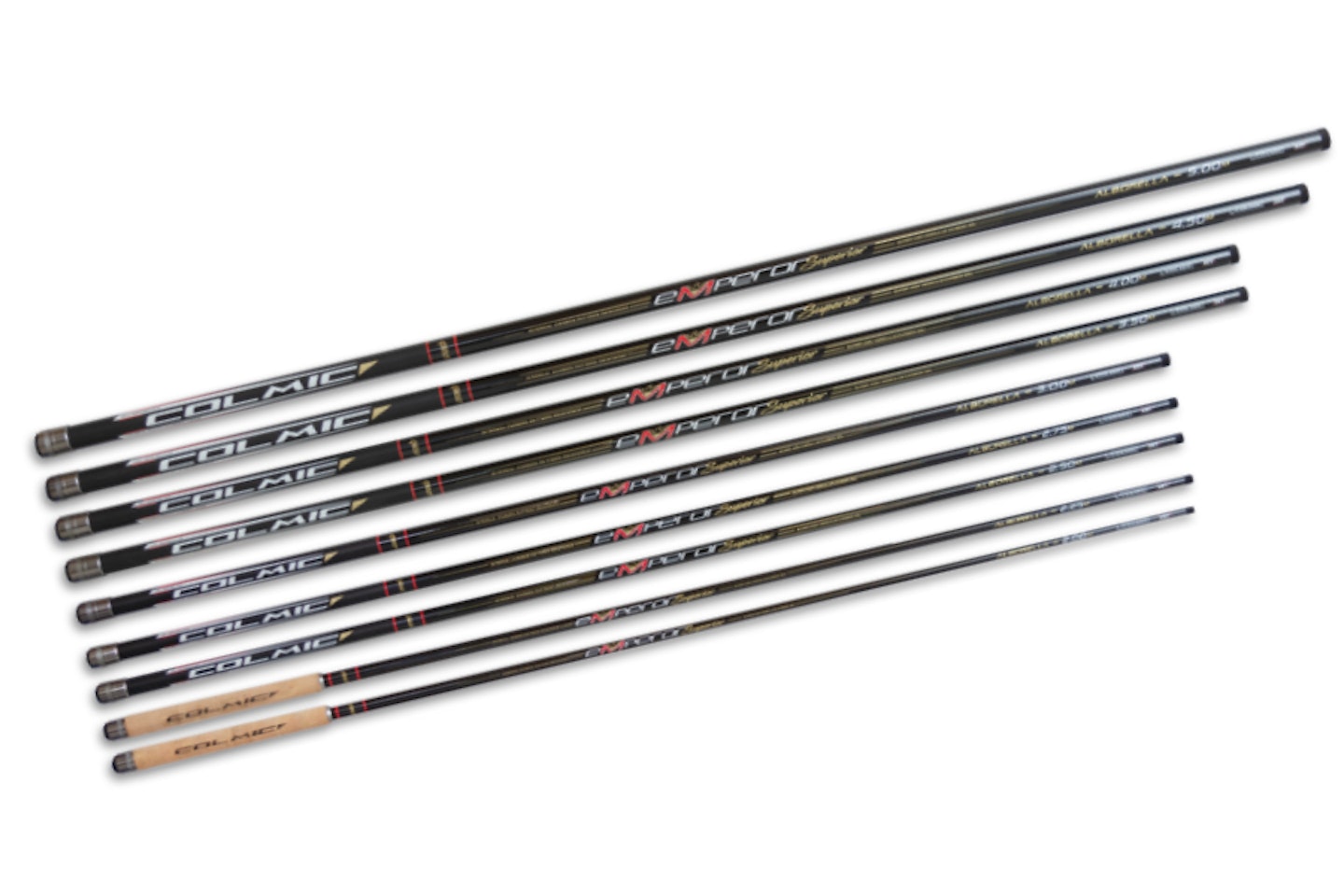
www.ebay.co.uk
The Colmic Emperor Pro has been a standout whip for the last few seasons, and if you've used one, you'll know why. Sharp, light and reliable. Now enter the Emperor Superior. It keeps everything anglers loved about the Pro but trims the weight and adds refinement. Thanks to new HM55 carbon, these whips are noticeably lighter without losing their trademark fast action and strength. If you thought the original was hard to beat, you might need to rethink.
There are nine lengths available, from a lightning-fast 2m & 2.5m that have cork handles, up to a versatile 5m. That gives you options, whether you're targeting fish to hand or stretching out a little further. Every model has a crisp action, ideal for fast repetitive fishing where every missed bite or wasted second counts.
The 2m whip is just 37g, while the 5m comes in at only 127g. That’s remarkable when you consider how durable and responsive these whips are under pressure. You can buy them individually or as part of a full whip pack with a padded holdall, deal if you want the full range to give you ultimate versatility.
Pros
- Fantastic for speed fishing
- Super light
- 2m & 2.5m have cork handles for grip
Cons
- Not the longest whips on the market
Best that money can buy
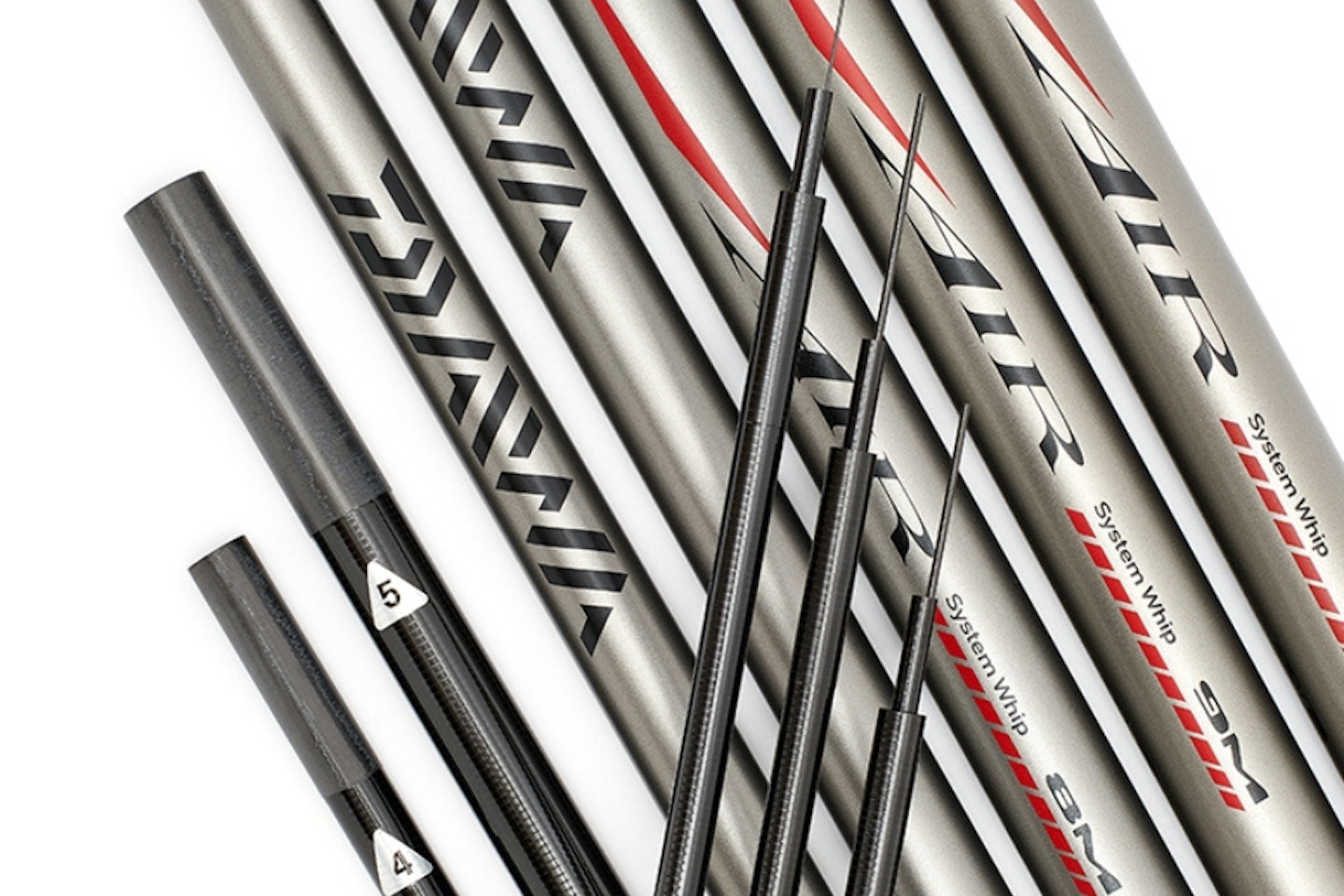
www.fishingtackleandbait.co.uk
If you’re after a whip that covers more than just catching tiddlers, then the Daiwa AIR System Whip is as close to a complete solution as you’ll get. It combines finesse with the strength and reach needed for any situation you may encounter, from small drains catching roach and dace to Irish rivers and lochs for hybrids and skimmers.
The 8m whip weighs just 280g. That’s impressively light for a piece of kit with this much backbone. The top three sections are telescopic with a solid carbon flick tip, perfect for fishing to hand on rivers and drains where speed and bite detection are key. But the best part of the system is its adaptability.
Daiwa supply two additional hollow telescopic top threes, designed to take light elastic. So, if you need to switch from speed fishing for bleak to targeting bonus fish, you can do it in a few seconds.
The remaining part of the whip is take-apart. You have the option to add-on extensions to take the whip to 9m and even 10m, all whilst retaining the rigidity and responsiveness of the whip. And conveniently, the full 10m system still packs down into one section, keeping things nice and compact.
Built using Daiwa’s HVF Nanoplus carbon and incorporating Super MSG, the AIR Whip isn’t just light, it’s incredibly responsive, fast and crisp. It flicks rigs out with ease, hits bites almost instantly.
There’s a full range of additional match kits available to round out the system. So you can adapt it to suit venues across the UK and Ireland.
Pros
- Lightweight and responsive
- Extendable to 9 & 10m
Cons
- Durability, as a delicate piece of equipment will require extra care to avoid damage
What to look out for
When choosing a whip, it helps to understand the two main types: fixed-length telescopic whips and system whips. Both are designed for speed fishing, but they offer different levels of versatility.
Telescopic whips are the most straightforward. They extend to a set length and are perfect for catching small fish quickly and efficiently. Their flick tips are crisp and responsive, making them ideal for swinging fish straight to hand. They're light, easy to use, and great for beginners or anyone fishing short and fast on canals, drains, or reservoirs.
System whips are more adaptable. They usually have a telescopic top followed by take apart sections, allowing you to adjust the length depending on the situation. Many come with spare tops, so you can swap between a flick tip and an elasticated top, giving you the option to target slightly bigger fish without changing your setup. This makes them especially useful on rivers and deeper venues.
In short: if you're after simplicity and speed or just starting out, go for a telescopic whip. If you want flexibility and the ability to fish a wider range of venues and styles, a system whip is the better option.
Glossary
Whip: A telescopic carbon or fibreglass fishing pole, usually around three to eight metres long.
Flick Tip: The end section where the rig is attached, there is a metal eye or plastic connector, but there will be no elastic present.
Elasticated section: The end of the tip section is cut back to allow elastic to be run through the centre of the section, this is fastened with a bung at the base and a rig connector at the tip end.
Telescopic: An item consisting of concentric tubular sections that are designed to slide into one another. The whip packs down into one large section.
Take Apart section: A section, usually at the end or the base of the whip that is pushed onto or into rather than telescopically attached.
Rig: The name refers to the final product of line, hooks, floats and weights.
Dolly Butt: A section usually around 0.5m that is inserted into the base of a whip for added length.
Fast Action: If a whip is fast acting, it means it can be moved quickly through the air to help striking efficiency.
Responsiveness: The time it takes for a strike to register at the tip end, better responsiveness means a shorter time between the two.
How to attach a whip rig
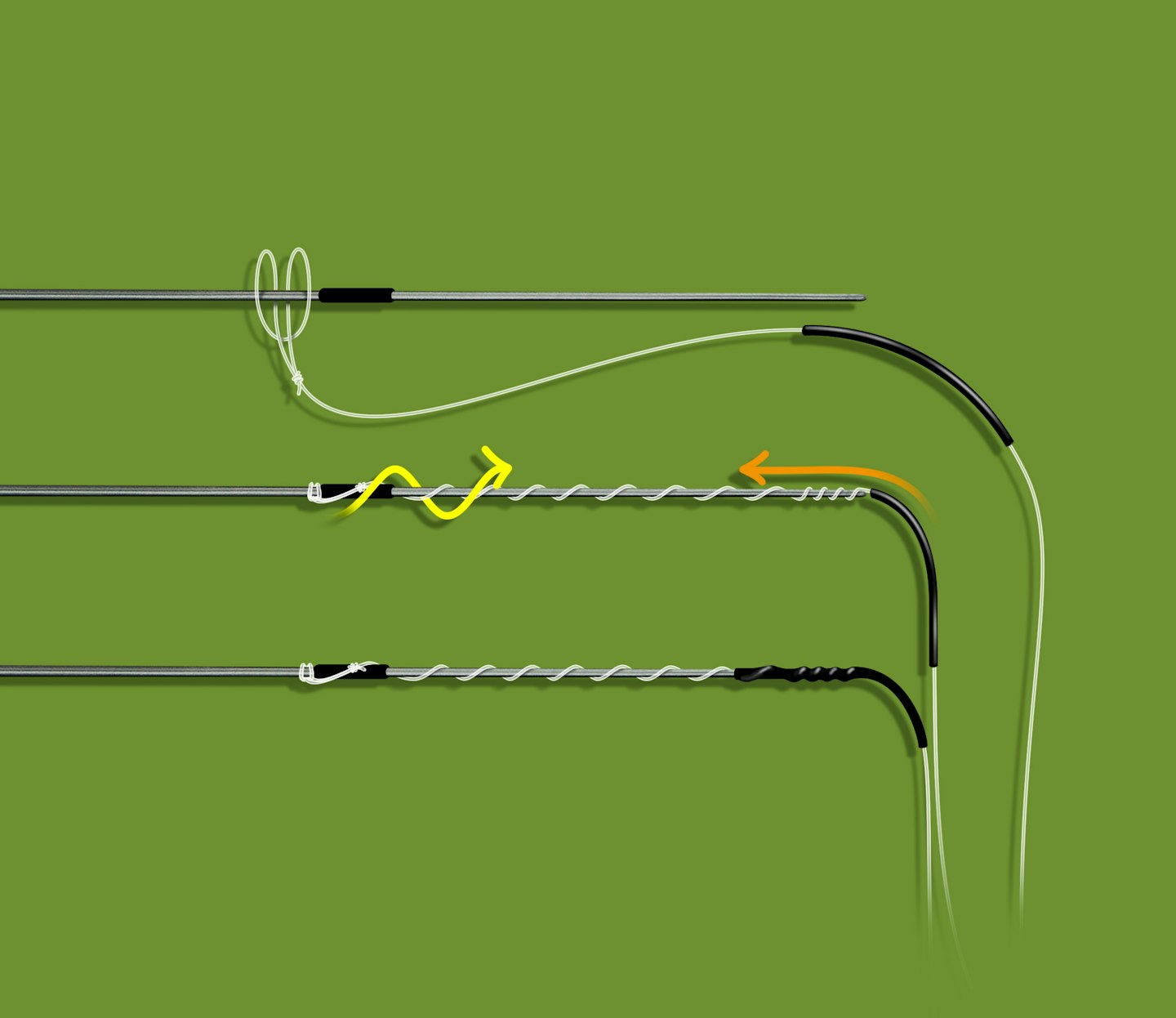
Frequently asked questions
What length whip is good for a beginner?
If you have just started fishing or this is your first venture into whip/pole fishing we recommend choosing one of around 4-5m in length. This will get you out far enough to catch fish, and it is also a comfortable length to get used to fishing without a reel. Any longer and you may find them a little cumbersome to use.
How do I attach the rig?
Attaching the rig couldn't be simpler. If the tip has a metal eye, you can just tie it directly onto it with whatever knot you prefer, if it has a plastic connector with a hook attachment, just create a loop in the rig, pull back the sleeve on the connector, attach the loop to the hook and slide the sleeve back over to lock it into place.
Are whips only for small fish?
Whilst whips are primarily used for catching smaller fish like roach and dace, this does not mean they aren't capable of landing larger fish. Many carp are caught on whips, it just takes some patience to land them. If you were looking to target somewhere that had a lot of larger fish like tench and carp, we recommend looking at one of the stronger products on the list or elasticating your chosen whip to cushion the fight.
Are whips easy to use?
When it comes to angling, using a whip is probably the simplest and easiest way to fish. There are no reels to get tangled, no casting is required, and you can buy good quality rigs that are ready to use. Simply attach the rig, bait the hook and swing it out into the lake and you are fishing, it really is that easy.
What is whip fishing?
Whips are short, telescopic poles that usually come in lengths between 2-6m. They are primarily designed to catch smaller fish quickly and easily. If you are new to fishing, whips are one of the easiest ways to start!
Can you catch carp on a whip?
Yes it is possible to catch carp on a whip, with some whips even being designed for carp! As long as you are patient and take your time, you can land some huge fish using a whip. If you have elastic in the end of the whip too, this can make it much easier to land bigger fish as this absorbs to lunges, preventing your line or whip breaking!
How to whip fish for beginners?
Whip fishing is really simple and easy to get the hang of! Buy a ready tied pole rig the same length as your whip, attach it directly to the end of the whip, either to the metal eye or elastic connector and you are fishing. Having the length of the rig the same as the whip means the bait and fish will swing directly into your hand when you lift the whip up, making everything more efficient. To cast, simply put the whip behind your head and push it towards the water, making sure the rig lands in a straight line.
_Author Jonathan Longden, is an experienced angler. With over 20 years experience in the tackle trade specialising in match and coarse fishing he has an extensive practical knowledge of the latest equipment and the specific needs of anglers. He currently occupies the role of commercial content writer at Angling Times._










